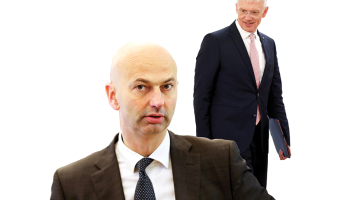
Somu līdzjutēji pasaules hokeja čempionātā. Foto: EPA/LETA
Recession and a ratings cut by S&P and one immediately thinks of Greece (or Ukraine, or...) but this has also happened much closer to home and in one of the economies that is often seen as a shining light of how things should be done, namely Finland.
Reasons for this, and in particular lessons for Latvia, if any, are what this article is about.
When discussing Greece (or other southern European countries) much of the trouble is structural - a hopelessly inefficient supply side - but this is not (or, according to data, certainly should not be) the case in Finland. In the World Economic Forum's competitiveness ranking Finland is fourth (Latvia 42nd), in the World Bank's Ease of Doing Business index Finland is 3rd (Latvia 23rd), in Transparency International's Corruption Perceptions Index Finland is again 3rd (Latvia 43rd) and I guess many are familiar with Finland typically scoring best in Europe in the PISA (Programme for International Student Assessment) tests. In other words, a great country in which to do business; with well-educated people and good competitiveness.














